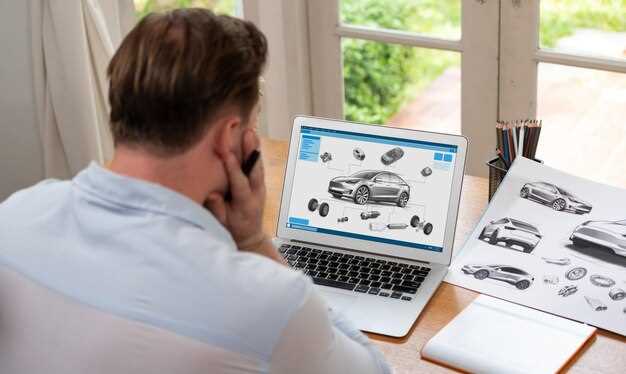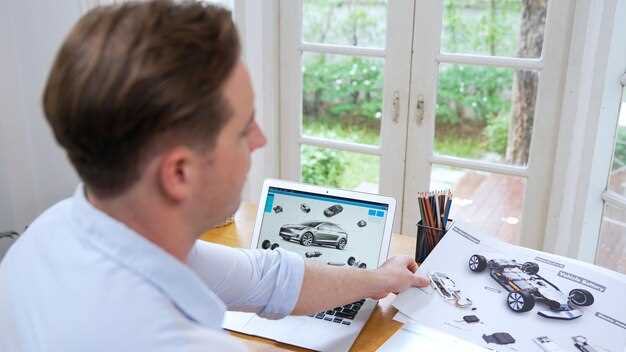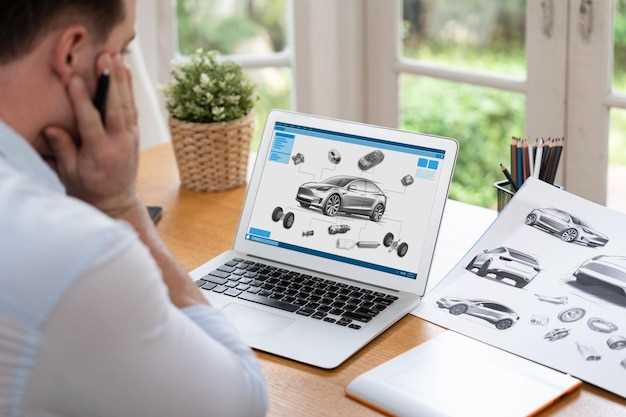
Embarking on your first custom car build is an exhilarating journey that combines passion, creativity, and technical know-how. Whether you’re a seasoned car enthusiast or a newcomer eager to dive into the world of customization, understanding the planning process is crucial. This guide will help you navigate the essential steps to transform your vision into a reality.
At the outset, it’s important to define your goals for the build. Do you aim to enhance performance, achieve a specific aesthetic, or create a unique blend of both? By identifying the purpose of your custom car, you will be better equipped to make informed decisions throughout the process. Researching different styles and trends of customization can also provide inspiration and clarity as you embark on this exciting venture.
Creating a budget is another fundamental aspect of planning your first build. Custom car projects can vary widely in cost, depending on the components you select and the modifications you want to implement. Establishing a realistic budget will not only keep your project on track but also help you prioritize your spending on the most critical upgrades and enhancements.
Defining Your Build Goals and Objectives
Establishing clear goals and objectives is a crucial step in planning your first custom car build. These goals will guide your decision-making process, ensuring that you stay focused and organized throughout the build. Here are some key aspects to consider:
| Goal Type | Description |
|---|---|
| Performance | Determine the level of performance you want from your car. Are you aiming for high speed, improved handling, or enhanced acceleration? |
| Aesthetics | Decide on the visual style of your car. Consider the body shape, color scheme, and interior design that reflect your personal taste. |
| Budget | Establish a clear budget for your project. Understanding your financial limitations will help shape your choices and prevent overspending. |
| Functionality | Identify the primary purpose of your build. Will it be a daily driver, a show car, or a weekend racer? This significantly impacts your design decisions. |
| Skill Level | Assess your own mechanical skills and knowledge. Set achievable objectives based on your ability to tackle various aspects of the build. |
Once you have defined your build goals and objectives, create a document that outlines each category. This will serve as a reference throughout the project and help you track your progress. Additionally, discussing these goals with fellow enthusiasts can provide valuable insights and suggestions, aligning your vision with practical realities. Remember, being clear and specific about what you want will lead to a more satisfying and rewarding car-building experience.
Choosing the Right Base Vehicle for Customization

Selecting the right base vehicle is critical for a successful custom car build. The foundation you choose will significantly impact not only the project’s feasibility but also the final outcome. Begin by identifying your goals for the customization. Are you looking for a classic car, a muscle car, or perhaps a modern vehicle that can be heavily modified? Each category offers different advantages and challenges.
Consider the availability of parts for your chosen vehicle. Popular models often have a robust aftermarket support network, making it easier to find components suitable for customization. Vehicles such as the Ford Mustang, Chevrolet Camaro, or Volkswagen Beetle are well-documented and supported by a vast array of aftermarket options. This accessibility can save time and money as you progress through your build.
Next, think about the vehicle’s existing performance and structural integrity. A solid frame and reliable engine will provide a better starting point for your modifications. Assess the condition of the vehicle thoroughly; a car with significant rust or damage may require excessive repairs, complicating your build process.
Another factor to consider is the weight and size of the vehicle. Heavier cars may present challenges in performance, especially if you’re aiming for speed and agility. Conversely, lighter vehicles can offer enhanced handling but may require additional reinforcement if you’re adding significant horsepower.
Finally, factor in your personal style and affinity for the vehicle model. A build is often a reflection of the builder’s personality, so choose a base car that resonates with you. This passion will keep you motivated throughout the customization process and ensure that the final result aligns with your vision.
Essential Tools and Equipment for Your Car Build
When embarking on a custom car build, having the right tools and equipment is essential for efficiency and quality results. Below is a comprehensive list of the most important tools you should consider for your project.
- Hand Tools:
- Socket Set: A versatile socket set is fundamental for working on various bolt sizes.
- Wrenches: Both standard and adjustable wrenches are necessary for loosening and tightening bolts.
- Screwdrivers: A set of screwdrivers, including both Phillips and flathead, will cover most assembly needs.
- Pliers: Needle-nose and standard pliers assist with gripping and maneuvering small parts.
- Power Tools:
- Electric Drill: A powerful drill is crucial for making holes and driving screws efficiently.
- Angle Grinder: Useful for cutting through metal and finishing sharp edges.
- Impact Wrench: This tool efficiently removes stubborn bolts, especially in tough areas.
- Bench Grinder: Ideal for sharpening tools and smoothing rough edges on various components.
- Measuring Tools:
- Tape Measure: Essential for accurate measurements during customization.
- Calipers: Useful for measuring small parts with precision.
- Level: Ensures that components are installed evenly, which is critical for performance.
- Protractor: Helps in achieving the correct angles for various parts.
- Safety Gear:
- Safety Glasses: Protect your eyes from debris while working on your build.
- Gloves: Use durable gloves to safeguard your hands during assembly and welding.
- Dust Mask: A mask will help prevent inhalation of particles and fumes.
- Ear Protection: Essential when using loud power tools to protect your hearing.
- Specialized Equipment:
- Welding Machine: Necessary for joining metal components during customization.
- Auto Lift: An auto lift or jack stands can facilitate easier access to the underbody of your car.
- Battery Charger: Important for maintaining battery health during long builds.
- Coolant System Flush Kit: Ensures your engine remains in optimal working condition.
By equipping yourself with these essential tools and equipment, you will set a solid foundation for your custom car build. Each tool plays a vital role in ensuring precision, safety, and efficiency throughout the entire process of customization.
Key Considerations for Engine and Performance Upgrades

When planning your custom car build, engine and performance upgrades are pivotal for enhancing the overall driving experience. Start by evaluating your current engine’s potential. Determine whether it’s feasible to achieve your performance goals through modifications or if replacing the engine entirely is a better option.
Choosing the right performance parts is critical. Components such as air intakes, exhaust systems, and tuning chips should be compatible with your vehicle’s specifications. Research different brands and their performance history to make informed choices that align with your build goals.
Engine size and type will largely dictate your performance upgrades. A turbocharged engine, for instance, provides a different upgrade pathway compared to a naturally aspirated engine. Keep in mind that each engine type has its unique set of tuning requirements and limitations.
Support systems, including cooling and fuel delivery, also require consideration. Upgrading to a high-performance radiator or fuel pump can greatly enhance engine efficiency and support higher horsepower levels. Be sure to account for these necessary upgrades to avoid overheating or fuel starvation.
Performance upgrades can impact your car’s reliability and drivability. It’s essential to strike a balance between power gains and everyday usability. Excessive horsepower may lead to difficulty in handling or increase maintenance needs.
Lastly, keep an eye on the overall budget. High-performance modifications can become costly quickly, so prioritize upgrades based on your driving needs and project goals. Make decisions that offer the best performance-to-cost ratio while maintaining the integrity of your custom car build.
Interior and Exterior Customization Options
When embarking on your first custom car build, one of the most exciting aspects is the potential for both interior and exterior customization. Each area offers a multitude of options that can significantly enhance the overall aesthetic and functionality of your vehicle.
Starting with exterior customization, options include a wide array of paint colors and finishes. You can choose from matte, glossy, or even metallic paints to create a unique look that stands out. Additionally, vinyl wraps can provide an alternative way to change your car’s appearance without permanent alterations. Body kits can also be integrated to improve aerodynamics and give your car a sportier appearance. Upgrading headlights and taillights with LED or projector options not only modernizes the look but can also improve visibility.
Wheels and tires are crucial elements of exterior customization. Selecting larger, unique alloy wheels can dramatically change the stance of your car, while performance tires can enhance handling characteristics. Don’t forget about the importance of the suspension; lowering or upgrading the suspension system can further enhance your vehicle’s appearance and performance.
Moving inside, the interior customization options are equally vast. Upgrading seats with custom upholstery can provide both comfort and style. You may choose leather, fabric, or specialized materials that suit your preferences. Adding custom steering wheels can enhance the driving experience and personalize your car’s cockpit.
Consider installing new dashboard elements or gauges that better reflect your style. Advanced infotainment systems can be integrated to modernize the interior, providing features like navigation, Bluetooth connectivity, and enhanced sound systems. Ambient lighting can also be added for a more personal and luxurious feel during nighttime drives.
In summary, both interior and exterior customization options play a vital role in creating a car that truly reflects your personality and driving style. Careful consideration of these aspects will help ensure your custom car build is not only visually stunning but also tailored to your specific needs and preferences.
Navigating Legal and Safety Regulations for Custom Builds
When embarking on a custom car build, understanding legal and safety regulations is crucial to avoid potential pitfalls. Each region has specific laws governing vehicle modifications, which may vary widely. It’s essential to research local regulations concerning emissions, safety standards, and the legal classification of your modified vehicle.
Start by checking with your local Department of Motor Vehicles (DMV) or equivalent authority. They can provide information on necessary inspections, registration requirements, and any imposed fees for custom builds. Documentary evidence proving compliance with emissions and safety regulations is often required.
Safety is paramount in vehicle customization. Ensure that any modifications comply with vehicle safety standards, including brake systems, lighting, and structural integrity. Engaging with experienced builders or customs shops can offer insights into best practices and potential hazards associated with specific alterations.
Additionally, it’s prudent to consult professional engineers or certified inspectors who specialize in custom vehicles. They can help assess the reliability and safety of more complex modifications, such as engine swaps or suspension changes, ensuring your build remains compliant and safe for road use.
Lastly, maintaining thorough documentation of all modifications made to your vehicle can prove beneficial. This record not only aids during inspections but also secures your investment in case of future resale or legal inquiries. By approaching your custom build with an informed perspective on legal and safety requirements, you can ensure a smoother and more successful build process.
